Here is a bit of trivia that I learned over the San Diego comic con. The film Wreck It Ralph is a nod to the classic arcade games however getting all of the licensed characters on the screen took a lot of hard work from Disney's legal department as well as the directors and producers themselves. The animators and designers were working with placeholder characters when they were framing key scenes in the movie pending approval to use characters from legal. For example, in the trailer Ralph is in a game character support group with villains from various games. The host is Clyde, one of the ghosts from Pac Man, had not gotten approval from the publishers at Namco Bandai. To get around this the animators had a generic ghost figure, a white sheet with eyeholes cut out of it floating in the air. Everyone could tell who it was supposed to represent without raising the ire of Namco. The animation team cited that he looked like the the ghosts featured in the Charlie Brown cartoons. They would create simple animatics of scenes like this to present to the publishers in order to get their approval. What was most interesting was that in many instances the creators of the characters had to approve of the likeness. They would provide the designers with notes on how they should and should not act.
Disney legal had to not only work with publishers but also had to find out who owned the rights for the characters in North America versus Japan. Given the amount of cameos they were planning the legal department was working overtime securing rights for the film's domestic and international release this holiday season. The creators and owners of the most classic characters were very protective of them. The writers were surprised to the response that they got when they proposed who one of the unemployed characters should be.
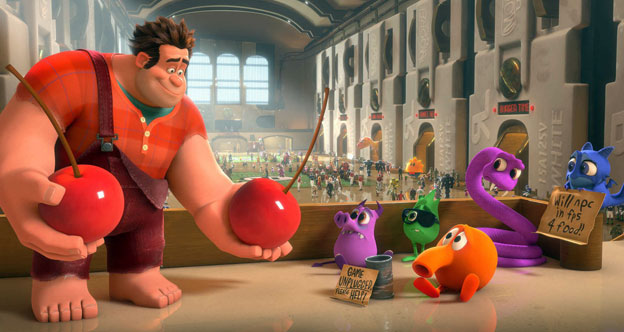
In the film Ralph comes across Q*bert, Coily, Slick, Ugg and Wrong-Way. The characters from the game Q*bert are begging in game central. Their cabinet was unplugged and they were now unemployed characters. Ralph gives them a cherry from the Pac Man game as a sign of support. This scene was written to show compassion on the part of a character that was supposed to be an apartment-wrecking bad guy. It was also a chance for fans of the arcade classic to remember some long-lost characters and rekindle a sense of nostalgia. The scene probably would not have worked if Disney had tried to insert other characters in the role. Think of all the easily identifiable classic characters and villains from the arcade and imagine which audiences would remember and feel pity for. It was doubtful that Peter Pepper or the dinosaurs Bub and Bob would have elicited the same reaction.
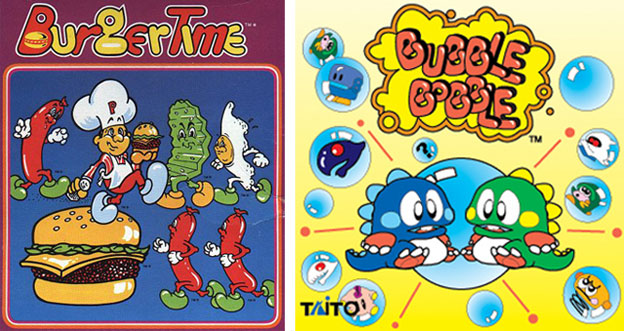
The heroes from Burgertime and Bubble Bobble were not the original choice for the scene and neither was Q*bert. When Disney was trying to get the rights for characters they approached Namco for more than the Pac Man characters. The hero of Dig Dug, Taizo Hori (a play on the Japanese word horitai zo "I want to dig"), was going to be the unemployed character. This stopped the people at Namco dead in their tracks.
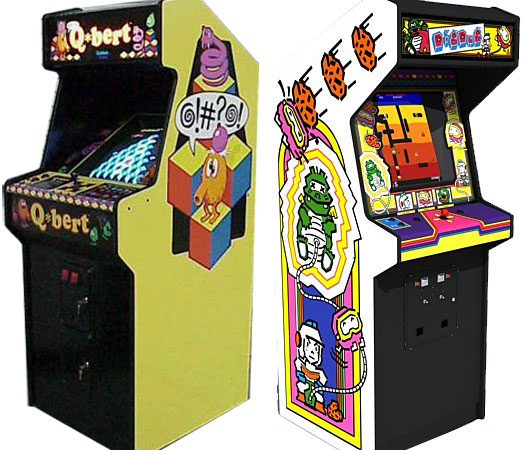
The team at Namco looked at the Disney people and said that there was no way that Taizo would ever be unemployed. His job was to dig, it was what he had been doing for the better part of 30 years and what he would always be associated with. They nixed the idea and forced Disney to look for other characters. When the story was relayed to me by entertainment writer Jim Hill I told him that Namco actually had a very good reason for rejecting the Disney proposal. Taizo was a legacy character, it would have been quite an insult to Namco and the Japanese to have him begging for food. While he was not as big as Pac Man, Namco's superstar icon, Taizo actually filled a very prominent role in the Namco library.
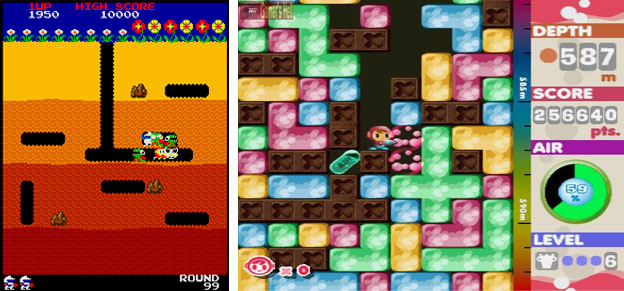
Dig Dug was not a one-hit wonder. It had gotten sequels in the arcade and on home consoles. Not to mention that Taizo was the father of Susumu Hori, the arcade hero better known as Mr. Driller. The puzzle games and title characters had become synonymous with Japanese arcades and in some ways with Japanese family structures as well. More than that they had a cult-like following because of how obsessed Namco was in fleshing out the characters and universe of Dig Dug and maintaining canon.
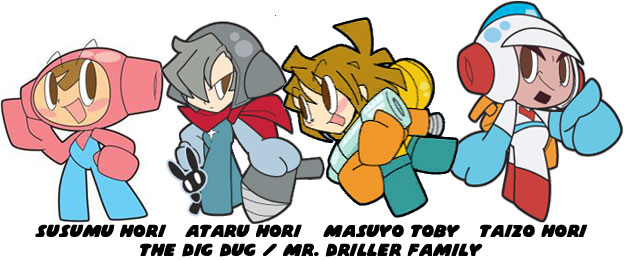
The family included elder son Ataru Hori, younger son Taiyo Toby (not pictured) and mother Masuyo "Kissy" Toby. The latter three actually had an estranged relationship with Taizo. It could be interpreted as a reflection of the relationship between families and one Japanese male archetype. The father would appear tender and compassionate at first but would become aloof and selfish as the family grew, eventually leading to destructive tendencies, see the term Yandere for more specific examples. This archetype was most commonly seen in Japanese soap operas and anime shows. As adult males became part of a salaryman grind in real life they would often mirror the characters from the shows. Adults would spend less and less time with their own families and begin to experience a disconnect with their own children. The love that the parents had for their children was unconditional however, even if they did not readily show it. If and when Mr. Driller gets in a jam he knows that his brothers and both parents would put their differences aside to rescue him.
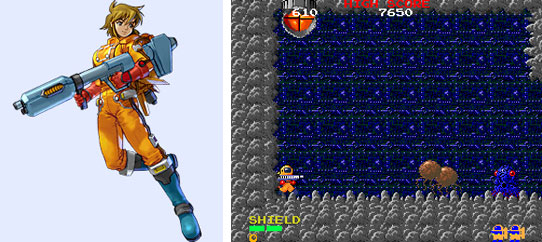
To further complicate issues for Namco and Disney the wife of Taizo and the mother of Susumu was a hero in her own right. Reflective of the proud Japanese society she would not allow her mate to be caught begging for scraps. Masuyo was the star of the science fiction shooter Baraduke, known better as Alien Sector in some arcades. She was the original sci-fi heroine in videogaming. In fact, her appearance as a female in power armor, hunting aliens and criminals in an underground labyrinth predated the characters and game of Metroid by a full year. Masuyo was a soldier in the UGSF (United Galaxy Space Force) before she mothered Mr. Driller.
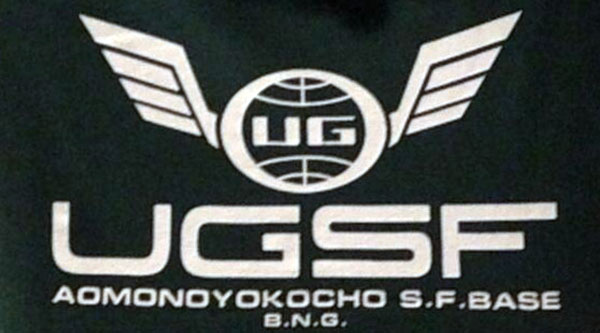
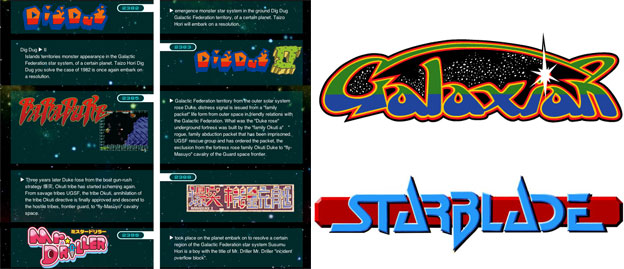
The Hori family were made up of individual heroes from UGSF continuity. They were very popular in Japan even if they were hardly well known in the USA. Reducing the importance and symbolism of the characters so that Ralph could get over with audiences would have been a disservice to Namco. It was possible that the writers of Wreck-it-Ralph were not aware of what Dig Dug meant to the grand scheme of arcade culture and history. Thankfully they found a suitable replacement with Q*bert, more than that he was a character whose unusual language could also be used for comedic effect. Could nostalgia be used for great dramatic effect? There were plenty of great films that had done that. Toy Story 3 was a great example but videogames were something unique. What would Wreck-it-Ralph have to give the game playing audiences in order to win them over? We shall look at this in the future. As always if you would like to sponsor me please visit my Patreon page and consider donating each month, even as little as $1 would help make better blogs and even podcasts!

No comments:
Post a Comment